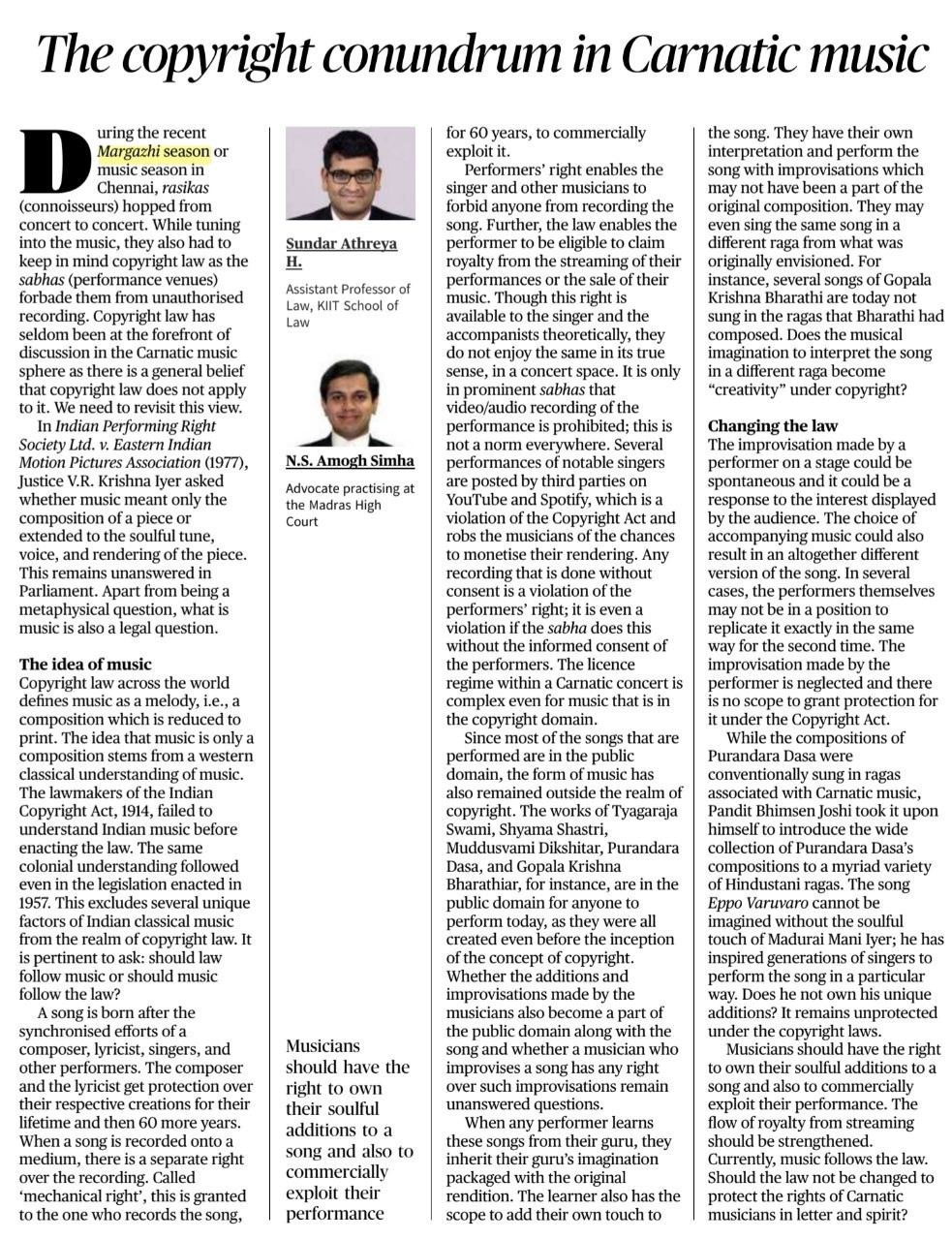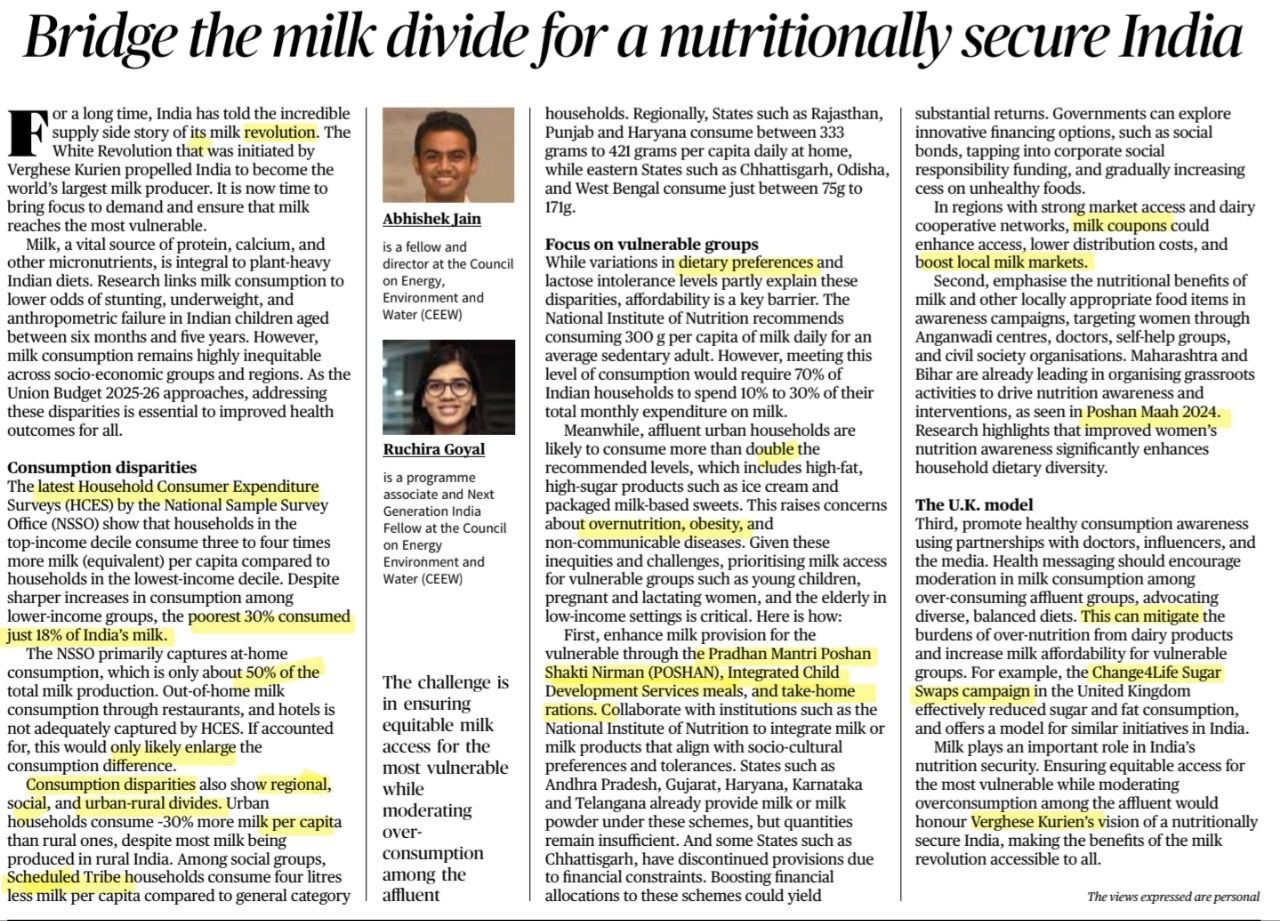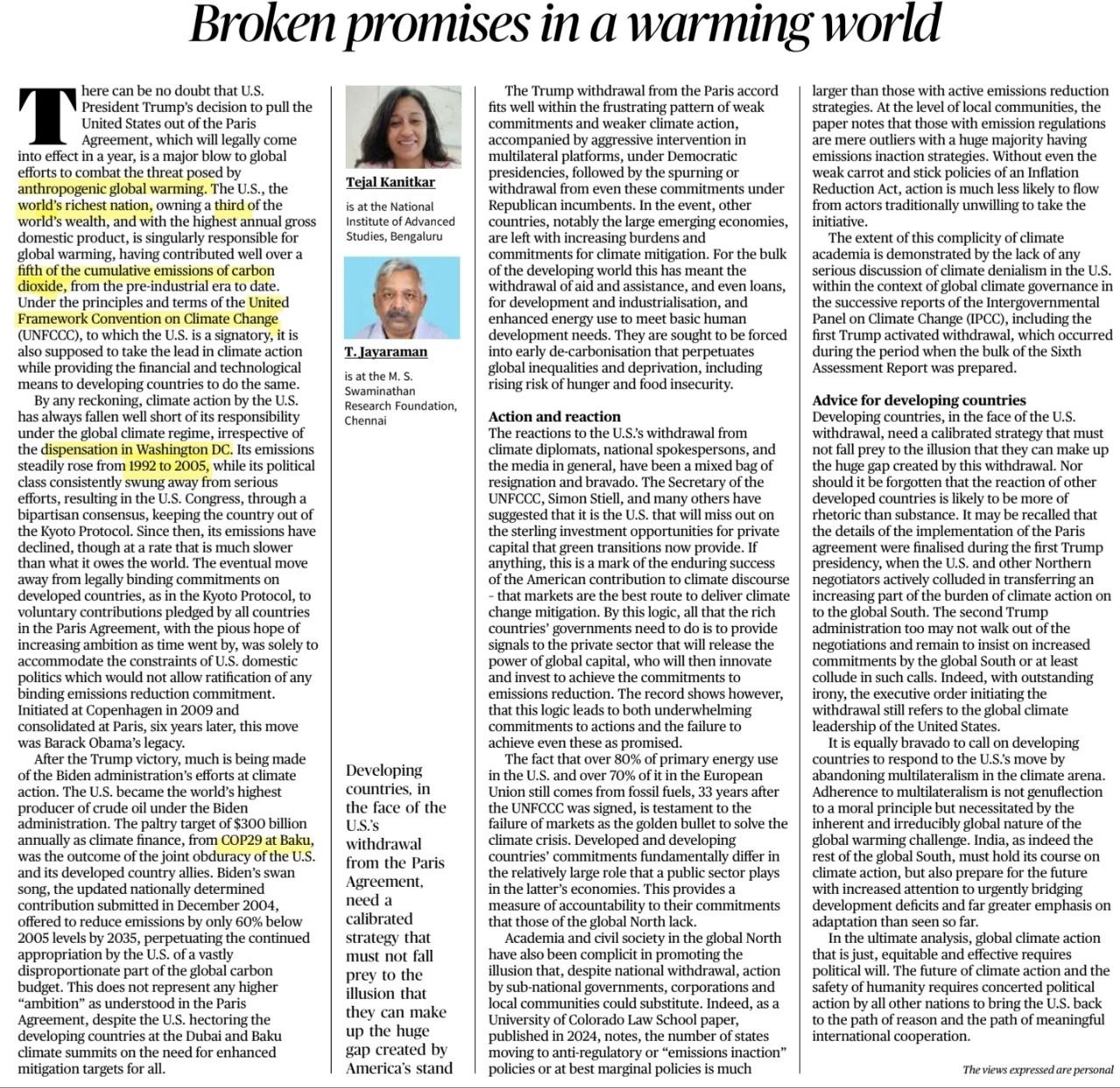1. Carnatic Music and Copyright: Legal and Ethical Dilemmas
Introduction
Carnatic music, a revered classical tradition, faces legal and ethical dilemmas concerning copyright laws. The primary issue revolves around whether performers have rights over their improvisations and whether traditional compositions in the public domain can be protected. The evolving nature of music challenges conventional copyright frameworks, especially in the digital age.
- The Concept of Copyright in Music
- Copyright law traditionally protects compositions, lyrics, and sound recordings.
- Indian copyright laws, influenced by colonial legal frameworks, often do not address the nuances of Indian classical music.
- The case of Indian Performing Right Society Ltd. v. Eastern Indian Motion Pictures Association (1977) raised questions about whether music is merely a composition or a complete performance.
- The Rights of Musicians and Performers
- Performers’ rights allow musicians to restrict unauthorized recordings of their performances.
- However, there is ambiguity regarding whether musicians can claim rights over their improvisations and variations.
- Digital platforms like YouTube and Spotify often violate performers’ rights by enabling unauthorized uploads of concerts.
- Public Domain and Traditional Compositions
- Many Carnatic compositions, including those by Tyagaraja, Muthuswami Dikshitar, and Purandara Dasa, are in the public domain.
- This raises questions about whether performers who modify or reinterpret these compositions can claim ownership of their versions.
- Improvisation and Creativity vs. Copyright Law
- Improvisation is central to Carnatic music, allowing artists to modify compositions in real time.
- While these improvisations may be unique, they are not currently protected under copyright law.
- The lack of legal protection discourages musicians from innovating, as their interpretations can be freely copied.
- Need for Legal Reforms
- Existing copyright laws should be revised to recognize and protect performers’ creative contributions.
- A licensing system similar to Western music copyright laws could be introduced to ensure fair remuneration.
- Strengthening copyright enforcement on digital platforms is essential to prevent unauthorized recordings and uploads.
Conclusion
The intersection of Carnatic music and copyright law presents unique challenges. While classical compositions belong to the public domain, performers’ rights and improvisations need better legal protection. A balanced legal framework that respects both tradition and modern creativity is necessary to safeguard the rights of musicians while ensuring cultural continuity.
Bottom of FormMains Practice Question |
Q: Discuss the challenges of applying copyright laws to Indian classical music, particularly Carnatic music. Suggest measures to balance the rights of composers, performers, and the public. |
2. Bridging the Milk Divide: Ensuring Nutritional Security in India
Introduction
India’s White Revolution made it the world’s largest milk producer. However, despite high production, there is inequitable access to milk, particularly among economically weaker sections. Ensuring milk reaches vulnerable populations is essential for addressing malnutrition, stunting, and other health disparities.
- Disparities in Milk Consumption
- Economic disparity: The wealthiest 10% consume four times more milk per capita than the poorest 30%, who consume only 18% of India’s milk.
- Regional disparity: High consumption in Punjab, Haryana, and Rajasthan (333-421g/day), while lower in states like Chhattisgarh, Odisha, and West Bengal (75-171g/day).
- Urban-rural divide: Urban households consume 30% more per capita than rural ones.
- Social disparity: Scheduled Tribes (ST) households consume significantly less than the general population.
- Challenges in Ensuring Equitable Access
- Affordability barrier: Meeting the recommended 300g/day intake would require 70% of households to spend 10-30% of their total food expenditure on milk.
- Overconsumption issues: Affluent urban households consume excess milk-based sweets and high-fat dairy, leading to obesity and non-communicable diseases (NCDs).
- Dietary preferences and lactose intolerance also impact consumption patterns.
- Policy Interventions to Improve Access
- Strengthening Existing Nutrition Programs
- Leverage government schemes like:
- Pradhan Mantri Poshan Shakti Nirman (POSHAN)
- Integrated Child Development Services (ICDS)
- Take-home ration programs
- Expand integration of milk and dairy-based products into these schemes to align with socio-cultural food habits.
- Enhancing Market Access for Vulnerable Populations
- Milk coupons in low-access regions can lower costs, reduce distribution inefficiencies, and boost local dairy markets.
- Public awareness campaigns (like Poshan Maah 2024) targeting women and grassroots organizations can enhance nutritional education and dietary choices.
- Lessons from the UK Model
- UK’s Change4Life Sugar Campaign successfully reduced sugar and fat consumption.
- Similar initiatives in India can moderate overconsumption of high-fat dairy among the affluent while promoting balanced diets for all.
Conclusion
Milk plays a crucial role in India’s food security and nutrition. Addressing disparities in consumption requires targeted government interventions, better distribution mechanisms, and awareness campaigns. By ensuring access for the vulnerable and regulating excess consumption among the affluent, India can honor Verghese Kurien’s vision of a nutritionally secure and equitable dairy economy.
Mains Practice Question |
Q: Discuss the challenges in ensuring equitable milk consumption in India. Suggest policy measures to improve access for vulnerable groups while regulating overconsumption among affluent populations. |
3. Global Climate Commitments: Challenges of Implementation and Equity
Introduction
The withdrawal of the United States from the Paris Agreement under the Trump administration was a significant setback for global climate action. As one of the world’s largest historical polluters, the U.S. has contributed significantly to global warming but has failed to take proportional responsibility for mitigation efforts. The withdrawal highlighted the broader issue of weak commitments by developed nations, leaving emerging economies burdened with climate mitigation responsibilities.
- Historical Responsibility of Developed Nations
- The U.S., the world’s richest country, has contributed over one-fifth of cumulative global CO₂ emissions.
- Under international agreements like the UN Framework Convention on Climate Change (UNFCCC), developed nations are expected to lead mitigation efforts and provide financial & technological support to developing countries.
- Despite commitments, S. emissions rose between 1992 and 2005, and bipartisan politics led to its withdrawal from the Kyoto Protocol.
- Impact of the U.S. Withdrawal from the Paris Agreement
- Reduced Climate Finance: The U.S. backtracked on its $300 billion annual climate finance commitment made at COP29 in Bali.
- Burden on Developing Countries: Large emerging economies now face greater financial and technological challenges in meeting their emission targets.
- Geopolitical Consequences: The move weakened multilateral climate action efforts and emboldened other nations to slow down their commitments.
- The Global Climate Policy Dilemma
- Developed nations emphasize market-driven climate solutions, assuming that private capital will drive transitions.
- However, over 80% of energy use in developing nations still comes from fossil fuels, indicating a need for stronger public sector investment rather than relying solely on market forces.
- Weak enforcement mechanisms in climate agreements mean that countries can evade accountability without facing significant consequences.
- Need for a Balanced Global Climate Strategy
- Role of Developed Nations
- Developed countries must honor their commitments to climate finance and technology transfers.
- The Inflation Reduction Act in the U.S. focuses on domestic policies but does not adequately support developing nations.
- Adaptive Strategies for Developing Nations
- Developing nations must pursue independent, region-specific climate policies rather than relying on Western leadership.
- Strengthening South-South cooperation and leveraging organizations like BRICS can help bridge the climate finance gap.
- Greater emphasis on climate adaptation policies is required, especially for countries vulnerable to climate disasters.
- Lessons for Future Climate Agreements
- Climate negotiations must ensure binding commitments rather than voluntary pledges.
- The Sixth Assessment Report (IPCC) has emphasized the need for immediate, collective action to prevent catastrophic climate impacts.
- Climate diplomacy must be insulated from political cycles, ensuring continuity despite leadership changes in major economies.
Conclusion
Global climate action must not be dictated by political fluctuations in individual nations. While developed countries have a moral and historical responsibility to lead mitigation efforts, developing countries must adopt adaptive and independent strategies to ensure climate resilience. Stronger legal frameworks, transparent climate finance mechanisms, and equitable burden-sharing are essential for a sustainable future.
Mains Practice Question |
Q: Discuss the impact of the U.S. withdrawal from the Paris Agreement on global climate action. How can developing countries create a resilient strategy to address climate change despite inconsistent commitments from developed nations? |




